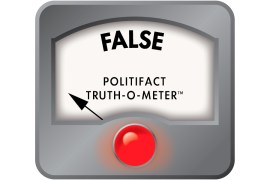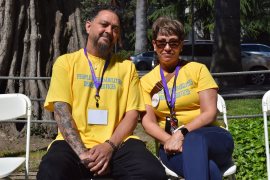Gilead Allowed To Submit New Evidence In Patent Case After Claiming Merck’s Lawyer Lied
The company alleges the lawyer misused what he learned on a conference call to change pending applications. In other pharmaceutical news, three newcomers have been tapped to join the Valeant board, and a study finds that drug shortages continue to plague emergency departments.
The Wall Street Journal:
Judge Allows More Evidence In Patent Dispute After Gilead Says Merck Attorney Lied
A federal judge has allowed Gilead Sciences Inc. to submit additional evidence in a drug-patent dispute with Merck & Co., after Gilead claimed a former Merck patent attorney lied under oath in the case. In March, a federal jury in San Jose, Calif., ordered Gilead to pay Merck $200 million after finding that two U.S. patents held by Merck and its partner, Ionis Pharmaceuticals Inc., were valid and infringed by Gilead’s multibillion-dollar hepatitis C drugs, Sovaldi and Harvoni. The trial arose from Gilead’s 2013 lawsuit seeking a judgment that the Merck patents were invalid. (Loftus, 5/2)
The Wall Street Journal:
The Dermatologist, VC And Accountant Tapped For Valeant’s Board
The three newcomers Valeant Pharmaceuticals International has selected for its board include an investor in small life-sciences companies, an executive at one of Canada’s biggest banks, and a dermatologist who has made television appearances including on “The Today Show” and “The Dr. Oz Show.” Valeant said Friday it was nominating the three – Argeris Karabelas, Russel Robertson and Amy Wechsler – for election to its board at its June 14 annual meeting. The Canadian drug company has been overhauling its board and executive leadership as it tries to move past concerns over its business practices and accounting that have plagued it since last year. Monday, its new CEO, Joseph Papa, started at Valeant, board member Bill Ackman said on CNBC. (Rapoport, 5/2)
Kaiser Health News:
Shortages Of Essential Emergency Care Drugs Increase, Study Finds
At some hospitals, posters on the wall in the emergency department list the drugs that are in short supply or unavailable, along with recommended alternatives. The low-tech visual aid can save time with critically ill patients, allowing doctors to focus on caring for them rather than doing research on the fly, said Dr. Jesse Pines, a professor of emergency medicine and director of the Office for Clinical Practice Innovation at the George Washington University School of Medicine and Health Sciences, who has studied the problems with shortages. The need for such workarounds probably won’t end anytime soon. (Andrews, 5/3)






